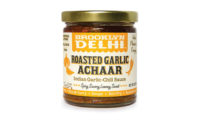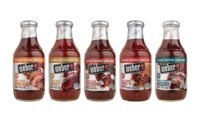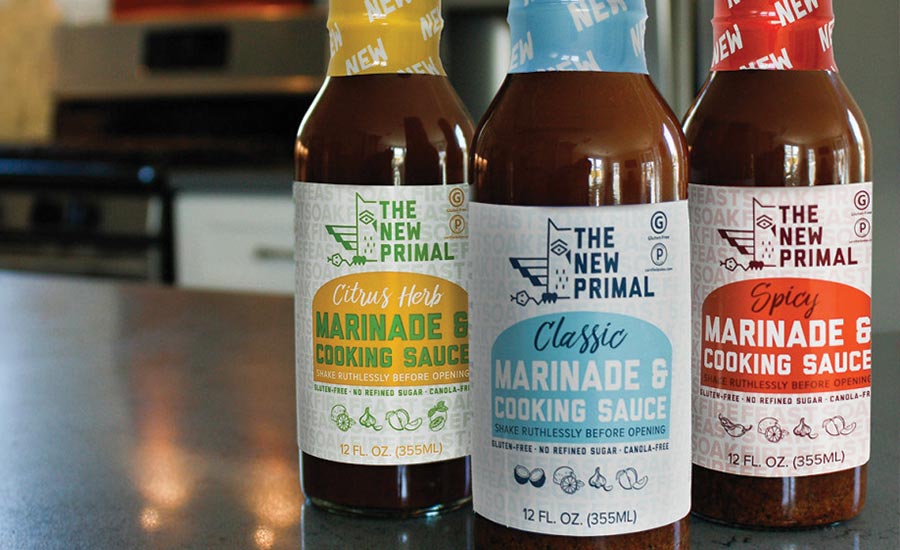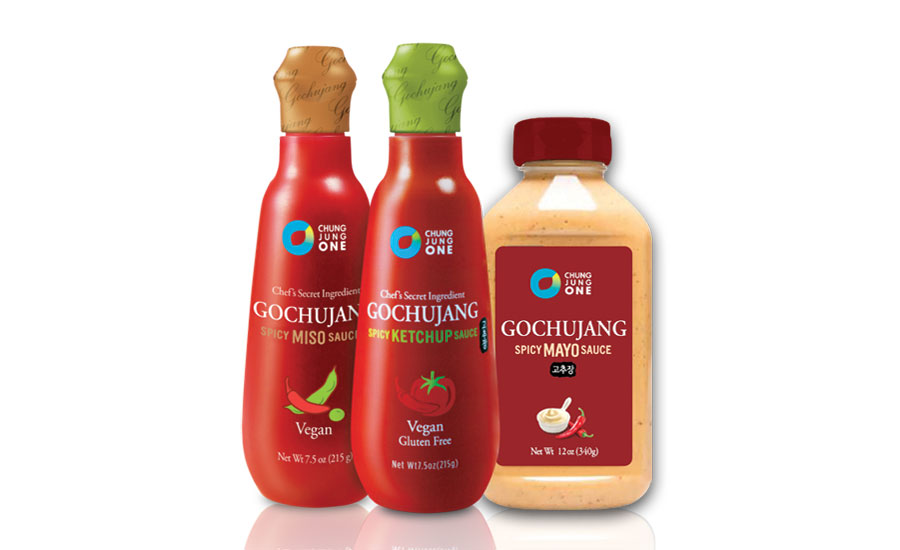Retail State of the Industry | Sauces, Dressings & Spreads
More to Pour: Sauces, Dressings and Spreads
Sauces, dressings and spreads reach for more—as in more flavor and health appeal






From ketchup to salsa to sriracha, the US market for condiments and sauces is full of the familiar, the foreign, and the fantastic. Consumer demand for these products and the flavors they impart helped the market for condiments and sauces reach $24 billion in 2016. The findings were published in “Condiments and Sauces: US Retail Market Trends & Opportunities,” a report by market research firm Packaged Facts.
Market growth in 2016 marked an annual rate of more than 2% during the preceding five years. Comparable—if not slightly lower—sales growth is anticipated year-over-year through 2021 despite challenges to the industry due to the widespread shift toward healthier living.
“The trend toward healthy eating has created challenges for marketers of sauces and condiments, as the perception that sauces and condiments are an unnecessary and unhealthy addition to many foods has made some consumers cut back on consumption,” says David Sprinkle, research director, Packaged Facts. “As a result, sauces and condiments are increasingly marketed as organic and healthy, with new options such as low-sodium or low-sugar varieties supporting restrictive diets.”
Marketing products as certified organic or carrying “free-from” labels has become part of several trends that will help keep sauces and condiments popular with a range of influential consumers, including Baby Boomers, Millennials, Hispanics, and African Americans.
Packaged Facts identified six trends shaping the condiments and sauces market. In each case, Prepared Foods provides new product examples.
Exotic Flavor Profiles Heating Up the Market: Ongoing multicultural changes in the US led to tremendous growth in the market for hot sauce from 2011 through 2016. As adventurous Millennials sought out new flavors, spicy foods and sauces became incredibly popular. Perhaps the most astounding trend during that time was the sudden rise of sriracha sauce.
Asian sauces, in particular, have been popular. Hormel Foods’ House of Tsang brand introduced Red Thai and Green Thai curry sauces. Elsewhere, Thai Culinary Arts Studio LLC, Yarmouth, Maine, introduced a Watcharee Thai Yellow Curry Sauce. Yai’s Thai, Denver, also launched three Thai Coconut Curry Sauces (Green, Yellow, Red) and Thai Almond Sauce. Yai’s Thai says all items are vegan, gluten-free, paleo friendly, Whole30 approved, and low in sodium. Conagra Brands, Chicago, last year said P.F. Chang’s co-founder Philip Chiang, helped product developers create five new P.F. Chang’s Home Menu sauces. Varieties include Kung Pao, Mongolian, Teriyaki, Sesame and Soy.
What also could be more exotic than Casablanca? In this case, it’s Casablanca Foods, New York, N.Y., where long-time personal chef Mina Kallmani developed a new line of Mina Moroccan sauces: Harissa (in spicy red and green pepper varieties, Shakshuka (Moroccan tomato) and Tagine (Chicken, Fish and Lamb/Beef varieties).
Last October also saw the Association for Dressings & Sauces present its 2017 “Sauce of the Year” award to Litehouse Inc., Sandpoint, Idaho, for its Mango Habanero Dressing, Sauce and Marinade.
“By combining different levels of sweet and heat, our Mango Habanero creates a dynamic experience for the taste buds that is perfectly on trend for consumers seeking interesting flavors and spice combinations,” said Brand Manager Camille Balfanz.
Last year also brought four new “street style” Taco Simmer Sauces from Urban Accents, Chicago. Varieties include Korean BBQ, Tangy Tomatillo & Garlic, Thai Chili and Jamaican Jerk.
Diverse Flavors Put a Spin on Staple Sauces and Condiments: Following the tastes of Millennials looking to try new foods and flavors, mature condiments with established recipes began to offer more twists on the classics after small startups paved the way. For instance, many mayonnaise brands now offer wasabi, chipotle, pesto, garlic, horseradish, and ginger flavors, among others. Ketchup varieties include chipotle, ghost pepper, sriracha, and sun-dried tomato; while mustard might feature garlic, bleu cheese, oregano, or, of all things, “everything bagel” flavors.
Offering an alternative take on mayonnaise was Kensington and Sons, New York City, which extended its Sir Kensington’s line with Avocado Oil Fabanaise. It combines 100% avocado oil with aquafaba, a squeeze of lime, and spices to create classic mayonnaise without eggs, soy, or modified protein powders.
Daesang America Inc., Commerce, Calif., introduced a Gochujang Spicy Mayo Sauce under the company’s Chung Jung One brand. Ready to use straight out of a squeeze bottle, Gochujang Spicy Mayo Sauce is a condiment for burgers, a dip for fried chicken, a dressing for coleslaw, and complements other dishes that benefit from a rich, yet balanced sweet-heat.
Speaking of heat, The Farmer’s Daughter, Hillsborough, N.C., partnered with Primo’s Peppers, Lafayette, La., on three hot pepper jellies. Varieties included Strawberry & Cayenne, Fig & Habanero and Citrus & Spice. Still more “sweet heat” news involved Fuego Box LLC. This Los Angeles hot sauce-of-the-month retailer introduced Hot Hive Spicy Honey, a raw, uncooked honey infused with the Carolina Reaper, reportedly the hottest pepper in the world.
On the milder side, Traina Foods, Patterson, Calif., ended last year by embracing a new packaging and a retail brand name: Traina Home Grown. In conjunction the company introduced two new organic ketchups: Sun Dried Tomato and Sicilian. Traina says its ketchups have four pounds of tomatoes in each 16oz bottle and all four flavors are high in lycopene, kosher, gluten free and vegan.
The Gluten-Free Effect: To follow the gluten-free trend, sauces and condiments that traditionally contained gluten increasingly became available in gluten-free varieties, such as Kikkoman Gluten-Free Soy Sauce. Additionally, naturally gluten-free foods began to be explicitly labeled as such. Some products implemented higher standards to prevent cross-contamination with gluten in order to adopt such labeling.
One newcomer to the sauce market was The New Primal, a company known for meat snacks. This North Charleston, S.C., company unveiled The New Primal Marinades and Cooking Sauces at more than 400 Whole Foods Market locations.
All three of The New Primal marinades and cooking sauces are Whole30 Approved with no refined sugars, are paleo certified and gluten-free certified. They contain no soy, dairy or oil and feature healthy powerhouse ingredients such as coconut aminos and apple cider vinegar. Each new flavor works as a marinade or cooking sauce on a variety of proteins and vegetables. Varieties include Classic, Spicy and a Citrus Herb.
Organic, Non-GMO, and Artisanal Products Gaining Steam: Consumer fears about possible health risks of consuming artificial additives and genetically modified organisms (GMOs) have driven growth for sauces and condiments labeled as “natural,” “organic,” and “non-GMO.” Food companies looking to satisfy this skeptical demographic have submitted products to certification groups such as the Non-GMO Project in record numbers.
One product addressing several key points was Litehouse Organic Lemon Herb Vinaigrette from Litehouse Inc., Sandpoint, Idaho. Not only does the dressing contain fewer than 50 calories per two-tablespoon serving, but it’s also USDA organic, certified gluten free, and Non-GMO Project Verified.
Last year also saw Tessemae’s All Natural, Annapolis, Md., launch a full line of organic condiments including buffalo sauces, mayonnaise, mustards, BBQ sauce and ketchup. The organic Ketchup and organic BBQ sauce also are vegan and contain zero added sugars.
Environmental Sustainability and Corporate Responsibility: As consumers show more interest in environmental sustainability and ethical business practices, companies are increasingly selling a story with their products. Websites or product labels may display information about a company’s history and how products are made to interest the consumer. This marketing tactic is often successful with Millennials, who tend to see corporate transparency as a big factor when making purchasing decisions.
Traina Foods’ marketing touts “slower is better” and Traina greets website visitors with the message, “We harness the natural power of the sun to create California’s finest sun dried tomatoes, apricots and a variety of other fruits.”
Nature Nate’s, McKinney, Tex., used the 2018 Winter Fancy Food Show to debut new retail offerings including honey fruit spreads, honey almond butter and a honey peanut butter blend. The McKinney, Tex., company notes that some honeys contain fillers, high fructose corn syrup and even pesticides. On the other hand, Nature Nate’s honey contains only 100% pure, raw honey. Moreover, its honey-based products provide new alternatives to nut butters, jams and syrups laden with fillers, preservatives or artificial sweeteners.
Good Foods LLC, Pleasant Prairie, Wis., used the Produce Marketing Association’s (PMA) Fresh Summit Expo to introduce six refrigerated salad dressings. Officials say all offerings are made with simple, real ingredients including fresh herbs (like shallots, parsley, chives and dill), fresh produce (carrots, avocados, apples, onions and garlic) and cold-pressed juices (carrot, beet, apple, lemon and orange). Good Foods notes all dressings are high pressure processed (HPP) to capture flavor and to maintain freshness.
Diet Sauces and Condiments for Healthy Eating: Lastly, this trend is simply too big to ignore or downplay. As mentioned, consumers increasingly focused on health might cut out certain sauces and condiments from their diets based on the perception that these add-ons are loaded with unnecessary sugar, salt, and preservatives. Having light food options is especially important for older consumers like Baby Boomers, who are likely to have age-related health concerns.
Avocado oil is in the news as a source of oleic acid (Omega-9 healthy fat) and for its potential to reduce cholesterol. Last year saw Pinnacle Foods launch a line of Wishbone avocado oil vinaigrettes in three varieties: Bacon Balsamic, Garden Herb and Roasted Garlic Citrus.
Probiotics represent another way to boost a product’s health appeal. Having made a name for itself with smoothies and blended juices, JUS by Julie, Brooklyn, N.Y., closed out last year with a probiotic spread and snack offering: Cashew Hummus and Crackers. Packaged in portable 3.34oz single-serve containers, the snack packs have a compartment with sprouted naturally fermented cashew hummus that’s infused with live probiotic cultures. Another compartment has gluten-free, crispy multigrain crackers.
Originally appeared in the March, 2018 issue of Prepared Foods as More to Pour.
Looking for a reprint of this article?
From high-res PDFs to custom plaques, order your copy today!









